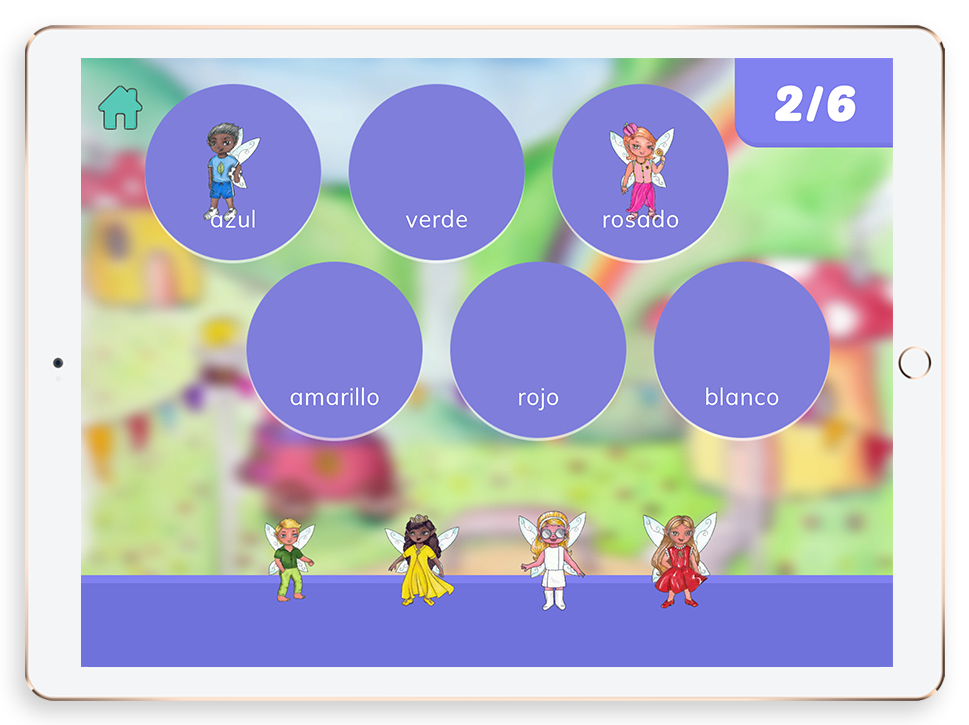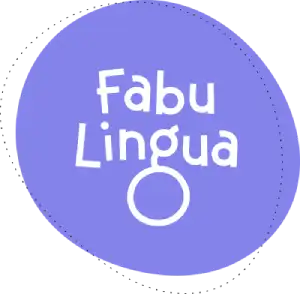Looking to bring more Spanish into your classroom in a way that actually sticks? Comprehensible Input (CI) is your new best friend. And no, you don’t have to be fluent, funny, or a certified actor to pull it off (although a flair for the dramatic never hurts).
Here are five fun, classroom-tested CI strategies you can start using today, plus, how FabuLingua makes these even easier for teachers who need time-saving magic without losing educational power.

1. TPRS (Teaching Proficiency Through Reading and Storytelling)

How to use TPRS for Comprehensible Input in the Spanish Classroom:
- Choose a simple story with 3–5 target phrases or verbs (e.g., quiere, va, dice, tiene hambre).
- Teach those words beforehand using TPR (e.g., rub your tummy dramatically for tiene hambre).
- Tell the story in Spanish, adding in gestures, repetition, and visual cues.
- Assign roles to student actors. Give them signs or props to help illustrate who they are.
- Ask the class easy yes/no or either/or questions throughout (e.g., “¿El elefante va a McDonald’s o a Taco Bell?”).
- Have the class respond together (choral response) or pick voluntarios for more advanced answers.
Why it works: Repetition + visuals + engagement = input they can actually absorb.
FabuLingua bonus: Every story in FabuLingua is built around high-frequency Spanish vocabulary, layered with visuals, audio, and interactivity. Want a stress-free TPRS setup? Launch a story on the app, let the story introduce the vocab, then reenact in class. It’s prepped. It’s pretty. And it’s backed by second language acquisition science.
2. Clip Chats (a.k.a. MovieTalk 2.0)
Have a class full of visual learners (or TikTok lovers)? Clip Chats take advantage of kids’ love for video by turning short clips into rich language-learning experiences.
Try it:
- Choose a short, dialogue-free clip (think Pixar shorts or Mr. Bean skits).
- Watch it in advance and pull out 3–6 key vocabulary words or phrases.
- Play a few seconds of the clip, pause, and describe what’s happening using those key words.
- Ask simple questions (yes/no, either/or, and eventually open-ended) about what they just saw.
- Repeat. A lot. It’s normal for a 3-minute clip to take 2–3 class periods.
- End with a fun re-watch of the entire clip with no pauses so students can enjoy their comprehension in action.

Why it works: Context + curiosity = engagement. Plus, you can revisit clips over multiple days for built-in repetition.
FabuLingua bonus: The stories in the app work beautifully for clip chat-style engagement. You can pause the interactive stories at key points and use them just like a video—except the language is already tailored for CI. Less YouTube rabbit holes, more meaningful learning.
3. Leveled Readers + Read Alouds
Want a calm, cozy way to get more Spanish into your day? Leveled readers are your ticket to low-prep, high-input storytelling. No extra noise, just good books and good vibes.
Try it:
- Choose a leveled reader appropriate for your students’ level—aim for 90–95% comprehensibility.
- Project the text on the board or use a document camera so students can see as you read.
- Read slowly and clearly. Stop to translate unfamiliar words or explain in context.
- Before each chapter, preview key vocab with a game or TPR gesture.
- Let students lie on the floor or sit comfortably—this is all about relaxed listening.
- Optional: follow up with a quick comprehension game, like a character sorting activity or “Who said it?” quotes.

Why it works: It’s calming, low-stress, and full of input-rich storytelling.
FabuLingua bonus: Our app is a leveled reader library—animated, read-aloud, and touch-to-translate built right in. Use it for quiet time, sub days, or literacy centers where every student can engage at their own pace.
4. Story Listening
Feeling artistically adventurous, or just need a marker and a whiteboard? Story Listening is one of the most engaging, zero-tech CI strategies out there. If you can draw a stick figure, you can teach with it.

Try it:
- Pick a familiar story (e.g., Goldilocks, Little Red Riding Hood) and simplify the language using cognates and common structures.
- As you tell the story in Spanish, draw each new scene or character on the whiteboard.
- Repeat high-frequency words (e.g., grande, pequeño, entra, ve) and keep your language slow and clear.
- Write tricky or new words on the board in both Spanish and English as they appear.
- Tell students their only job is to “mirar” and “escuchar.”
- Laugh with them when your bear looks more like a potato. They’ll love it.
Why it works: It’s hypnotically engaging and fantastically low prep. You’ll feel like a wizard.
FabuLingua bonus: Not a fan of drawing? Each FabuLingua story already includes vivid illustrations synced with spoken Spanish. Students can listen, look, and learn. It’s like Story Listening with training wheels—and a built-in narrator.
5. Total Physical Response (TPR)
Got wiggly students who need to move? TPR turns vocab into movement, making it memorable and fun—especially for your kinesthetic learners.
Try it:
- Choose 5–8 action verbs (e.g., corre, salta, come, duerme, grita).
- Create a gesture for each word. Act them out big and silly!
- Practice the gestures as a whole class. Call out verbs in random order and have them act it out.
- Put the verbs into context using commands (“¡Corre a la puerta!”), mini-stories, or Simon Says-style games.
- Keep reusing these same verbs in your stories, games, and activities all year long.
Why it works: Movement boosts memory. And it makes class more fun (aka lowers the affective filter, which research shows is key to acquisition).
FabuLingua bonus: Our stories are designed with TPR potential in mind. Many teachers use the app to intro vocabulary, then follow up with physical games in class to lock it in. It’s all about multimodal magic.

Why CI Works (and Why FabuLingua Makes It Easier)

Comprehensible Input (CI) is the gold standard in second language acquisition. Why? Because it mirrors the way we naturally learn language, by hearing it in context, understanding what’s being said, and gradually absorbing how it all works without being explicitly taught every rule.
Dr. Stephen Krashen’s research shows that when language is understandable, compelling, and delivered in a low-stress environment, the brain soaks it up like a sponge. No forced speaking. No anxiety. Just joyful learning that actually sticks.
Here’s where FabuLingua stands out:
- It’s science-backed. Every FabuLingua story is crafted around Krashen’s core principles – Comprehensible Input, the Affective Filter, and the Silent Period. Kids aren’t pressured to produce language. They’re immersed in it, enjoying stories, and picking it up naturally.
- It uses storytelling, the ultimate CI vehicle. Stories are emotionally engaging, culturally rich, and full of context clues. FabuLingua turns this superpower into bite-sized, interactive adventures that kids want to revisit again and again.
- It’s gamified for motivation. Kids earn rewards, collect treasures, and unlock achievements—but only by engaging with the language. It’s motivation with meaning, not mindless screen time. Learn more about our gamification here.


- It’s multimodal and inclusive. Every story combines audio, visuals, text highlighting, and touch-to-translate support. That means every student, regardless of reading level or learning style, can participate and feel successful.
- It saves teachers HOURS. No prep, no printing, no hunting for age-appropriate Spanish materials. Just open the app, choose a story, and go. Whether you teach daily or see your students once a week, FabuLingua boosts exposure in a way that’s easy to plug into your classroom flow.
- It bridges home and school. Families can use the app for free outside of class, extending CI exposure beyond your limited classroom minutes, and making Spanish a shared, story-based experience.
Ready to Bring CI to Your Classroom (Without the Extra Prep)?
Create your free FabuLingua account today. Get instant access to our library of interactive Spanish stories designed to deliver CI the fun, effective way.
Let your students fall in love with Spanish, one magical story at a time.

